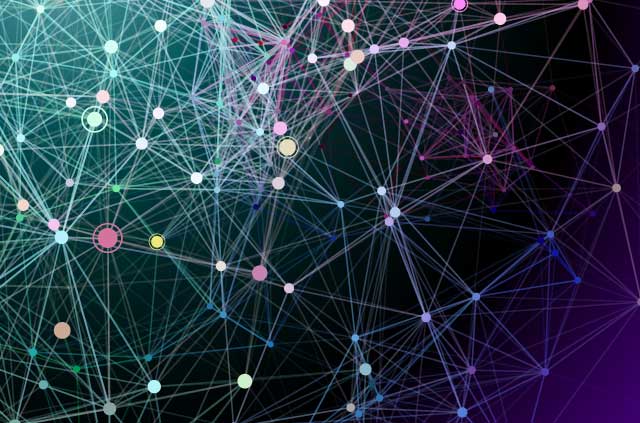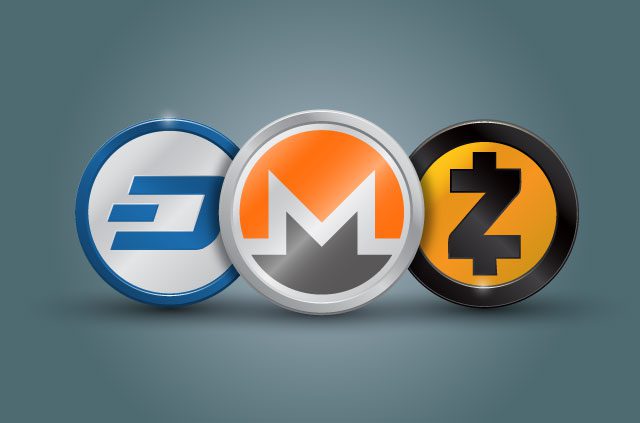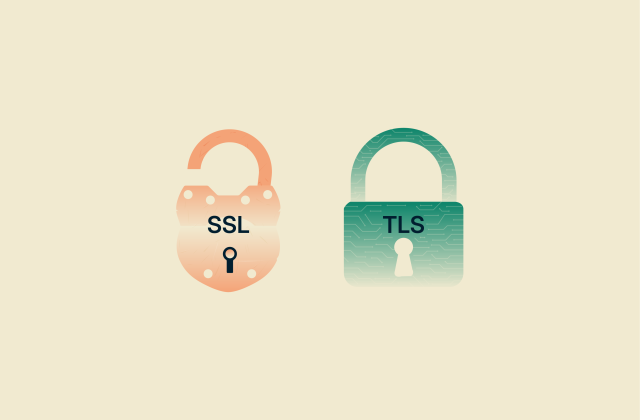What is Web3, and why does it matter?



Many people describe Web3 as the next stage in the history of the internet. Critics of today’s internet point to the dominance of a few small platforms that generate most of the overall traffic. What’s more, the infrastructure on which the web runs is similarly centralized. Proponents of Web3 argue for a new paradigm built on the principles of decentralization and user ownership.
In this guide, we'll explore the model of history that divides the internet between Web1 and Web2, break down the core principles and technologies that could drive Web3, and examine its real-world applications and future implications.
Please note: This information is for general educational purposes and not financial or investment advice.
What is Web3?
Web3, sometimes referred to as the decentralized web, describes an alternative model of the internet that some believe will take hold in the near future. It's an umbrella term for a new online ecosystem built on blockchain and distributed networks. Advocates argue that such a system will shift power away from large tech companies and toward individual users.
Backers hope that Web3 will give internet users greater ownership over their data, digital assets, and online identity. As such, it is often envisioned as the "read-write-own" version of the web.
The evolution from Web1 and Web2
The history of the internet is seen by many as going through distinct phases. Web1, generally seen as lasting from the birth of the internet to the mid-2000s, was a predominantly static, "read-only" experience. Most websites didn’t allow for much visitor interaction. For example, many sites lacked the comment sections that are common today.
In contrast, Web2 is characterized as the “read-write” phase of the internet. It saw the rise of social media and user-generated content. Rather than thousands of small sites run mostly by individuals or small groups, the internet coalesced around massive platforms. These are run by companies and teams but generally give everyone the power to create and share content.
Web2 also brought the centralization of data and power into the hands of a few entities. A small number of top sites (many run by big companies like Google, Meta, and Amazon) account for a large portion of global web traffic; estimates in recent studies put the top 116 domains at around one-third of all visits. On the infrastructure side, it is often the very same companies running the systems on which Web2 depends.
Web3 as the next internet paradigm
The concept of Web3 started to gain traction around 2014, as Bitcoin began to attract widespread attention. Considering the possible implications of blockchain technology, some theorized that it could serve as an antidote to the perceived limitations of Web2.
Many hope that Web3 will counteract the centralizing forces that dominate the Web2 era. Optimists imagine a new paradigm of distributed infrastructure and user-owned data. While certain jurisdictions have established the “right to be forgotten,” applying this principle to Web3 is more complex. Because data recorded on public blockchains is intentionally immutable, it generally can’t be deleted. Instead, some projects address privacy concerns by allowing users to revoke application permissions or by keeping sensitive personal data off-chain, where it can be changed or erased if needed.
In Web2, platforms own user data and can censor or monetize it. In contrast, Web3 envisions a trustless, permissionless, and transparent internet built on blockchain technology. While the extent to which this vision can be realized remains uncertain; such systems could shift more control toward users and enable new forms of digital ownership.
Core principles of Web3
The ideas of Web3 are largely a reaction to the realities of the Web2 era. It’s fueled by both technology and philosophy, with the two being intertwined.
Decentralization
Decentralization is the foundational principle of Web3. Under an ideal Web3, data is distributed across a wide peer-to-peer network of nodes rather than centralized in servers owned and controlled by large corporations. Large cloud providers might still retain a key role, but the hope is that a decentralized architecture will ensure that no single entity can control the network, making it resistant to censorship and manipulation.
Also key to the Web3 framework are dApps (decentralized apps). These primarily rely on independent nodes instead of centralized servers. Anyone can interact with the network, but no single entity controls it.
Trustlessness and open participation
Web3 is envisioned as a system built on distributed trust. This means that no central authority is needed to facilitate interactions between users. Trust is embedded directly into the code and protocols of the blockchain, with all participants able to independently verify the flow of data. This ensures that transactions and agreements are executed exactly as dictated by the underlying code. Trust is still important (especially in off-chain contexts), but it’s less centralized.
At the same time, this enables anyone to access the network, build applications, or contribute to its infrastructure without needing approval from a central gatekeeper.
Semantic web and interoperability
The semantic web is a concept that aims to make data machine-readable. It uses technologies like RDF (Resource Description Framework), SPARQL (RDF Query Language), and OWL (Web Ontology Language) to add meaning to user-created data, helping machines interpret both its content and context.
Promoting the semantic web was a central aim of Web 3.0, an earlier vision of the internet’s future. Web 3.0 differs significantly from today’s Web3 framework in both goals and underlying technologies. Even so, the semantic web may still have a role in Web3. For example, decentralized knowledge graphs apply semantic web principles while aligning with Web3 values. Likewise, interoperability across blockchains is important for maintaining a practical Web3 ecosystem.
Technologies that power Web3
A suite of interconnected technologies is essential for implementing Web3. Already developed and used to a limited extent, these building blocks will need to be more widely entrenched in order to create a Web3 future.
Blockchain
Blockchain technology serves as a decentralized and transparent database. A blockchain stores data in "blocks" that are linked together using cryptography, creating a public, continuously growing, and immutable digital ledger.
Each block contains a cryptographic hash of the previous one, linking them together to form a “chain.” This design is intended to make it almost impossible to alter or delete past data without the consensus of the entire network. This architecture directly enables Web3's core principles of distributed trust, immutability, and transparency by providing a shared record.
For instance, two parties can conduct a blockchain transaction without relying on any middleman. The transaction becomes visible on the public blockchain, letting anyone independently verify the details. If anyone attempts to alter any transaction data, it will be rejected by the network because every node in the network has a copy of the blockchain, making any mismatch immediately apparent. Consensus mechanisms ensure that all nodes on a network must collectively agree on the order and validity of transactions, so no single participant can override the system. This allows the whole system to work despite the absence of a central authority.
Smart contracts
Smart contracts are self-executing digital agreements. The terms of a smart contract are written directly into its code. When a set of predetermined conditions is met, the contract automatically executes the agreed-upon action.
These contracts exist on the blockchain, and once deployed, they generally can’t be changed except under agreed-upon conditions. This helps ensure transparency and security. If widely adopted, some advocates believe that smart contracts would reduce reliance on trusted third parties like lawyers or banks. This may not turn out to be true, but smart contracts could still improve efficiency and consistency. By ensuring that transactions follow predefined rules and are executed exactly as written, it’s possible that the need for human oversight would be reduced.
As an example, a smart contract could automatically release loyalty points to a customer once they complete a predefined number of on-chain purchases or trigger token rewards in a decentralized app when users reach certain milestones.
Cryptocurrencies
Cryptocurrencies might function as the native medium of exchange for use in dApps and smart contracts. They exist entirely on the blockchain, supporting peer-to-peer transfers without a third-party intermediary.
Secured by cryptography, cryptocurrencies are generally resistant to counterfeiting. New coins are created according to the protocol’s rules (commonly through mining or staking), and any attempt to generate additional coins outside these rules would typically be rejected by the network.
Transactions are validated by network nodes and recorded in blocks, which makes altering past transactions extremely difficult. To change a recorded transaction, an actor would need to influence a majority of the network and alter the chain of blocks, a scenario considered highly unlikely on large, well-established networks. However, smaller or less-secured networks may be more vulnerable if a participant can control a significant portion of the nodes, which is a possibility mitigated in many networks through mechanisms like staking requirements.
Alongside facilitating payments, it’s hoped that cryptocurrencies will play a key role in powering the utility of Web3 ecosystems. For instance, cryptocurrencies can be used to reward users for contributing content to a decentralized app or testing a game. They’re also a practical and transparent means of determining how much weight a participant holds during on-chain governance discussions.
Tokenization and NFTs
Tokenization is the process of creating a token on the blockchain that represents a physical or digital asset. In a Web3 context, this could allow for the fractional ownership and efficient trading of otherwise illiquid assets. Some companies use tokens to facilitate and verify investments in areas like (non-digital) art and real estate.
NFTs (non-fungible tokens) are a unique type of token that represents ownership of something, usually a digital asset. Unlike cryptocurrencies, NFTs are non-interchangeable, meaning each one has a unique identity and value. Even if the likeness of an asset is copied or reproduced, the NFT itself serves as a unique on-chain record but does not automatically confer intellectual property rights or cross-platform usage.
Each token is uniquely recorded on the blockchain, cryptographically linked to its owner, and traceable through a public chain of custody. This allows NFTs to provide on-chain proof of ownership of a token. In-app use and licensing are governed by each platform. Smart contracts can even be written to enforce rules around transfers and royalties tied to NFTs.
Tokenization and NFTs are central to Web3’s aspirational vision of digital ownership. If widely adopted, they could provide a verifiable and transparent way for individuals to own and trade tokens on the blockchain, while platform-specific rules continue to govern how those tokens can be used.
dApps and DAOs
Decentralized Applications (dApps) are applications that are run on a decentralized network, such as a blockchain, rather than hosted from servers controlled by a company. Usually open source, dApps are envisioned as the user-facing layer of Web3. In contrast to the services and websites that dominate Web2, they could create platforms that are open, transparent, and resistant to censorship.
Though dApps haven’t had much success taking hold among the wider public, platforms like Uniswap (a crypto-focused exchange) and Decentraland (a virtual reality platform) serve as proofs of the concept.
DAOs (Decentralized Autonomous Organizations) are built on similar principles to dApps but are focused on smart contracts. They’re tools that aim to automate the governance and decision-making of an entire organization.
In a DAO, a central authority is replaced by a set of rules encoded into the blockchain, with members voting on proposals to govern the organization. Implementation is very limited outside the world of blockchain enthusiasts, but in Web3, forums and social media sites could operate as DAOs, allowing for decentralized community-based governance and moderation.
Real-world applications of Web3
Though not yet truly widespread, Web3 technologies are being deployed in various real-world applications, from finance to gaming.
Decentralized Finance (DeFi)
Decentralized Finance, or DeFi, is a nascent financial system built on blockchain technology.
Web3 advocates believe that it could one day take on many of the roles played by banks and brokerages today. Using smart contracts, DeFi platforms could enable permissionless peer-to-peer lending, borrowing, and trading, all without requiring users to place trust in a centralized authority.
For example, instead of relying on a bank to give you a loan, a DeFi protocol might automatically provide one according to a smart contract that you fulfill with your crypto assets as collateral.
Digital identity and authentication
Under a Web3 framework, blockchains, Decentralized Identifiers (DIDs), and Verifiable Credentials (VC) enable self-sovereign identity. In other words, individuals would have full ownership and control over their online identity and personal data. For privacy purposes, users share only the minimum information necessary for a given interaction, enabling people to avoid revealing their entire identity.
This could solve some of the problems associated with the conflict between the need for verification and the desire for anonymity. Widespread adoption of DIDs and VCs could see the internet move away from traditional usernames and passwords toward a more secure, cryptographic method.
Though sparsely used today, a wider implementation of DIDs and VCs would give users greater control over their online presence, addressing some of the privacy concerns that have arisen in the Web2 era.
Web3 gaming and the Metaverse
Many advocates point to gaming and virtual realities as two spaces where Web3 principles and technologies could solve real problems. Digital assets take up an increasing share of the economy, but ownership can be unclear or generally weighted toward providers over consumers.
The blockchain could give individuals a clearer claim to in-game assets and other virtual goods. Similarly, Web3 games use NFTs to tokenize assets. This allows players to genuinely own, trade, and even sell their digital items on open marketplaces.
Interoperability, which is the ability of various systems to work together, is another goal of Web3 gaming. Unlike most traditional games, Web3 alternatives might enable the linking of in-game assets and players across various platforms.
True ownership of in-game assets and the ability to move them across different blockchains and virtual worlds is central to the broader Metaverse concept. This might one day enable a persistent and unified digital identity, as an avatar’s assets might be used and recognized across many virtual worlds and platforms.
File sharing and storage (e.g., IPFS)
In Web3, decentralized file storage aims to replace the current model, which is built around centralized cloud servers like iCloud or Google Drive. Protocols like the InterPlanetary File System (IPFS) enable the creation of a distributed peer-to-peer network for storing and sharing data.
Instead of being hosted in a single location, IPFS enables files to be hosted by many different nodes at once. Alongside decentralization, this also has benefits for file integrity and availability, as there's no single point of failure and the data is replicated across several nodes.
Pros and cons of Web3
While Web3 presents a compelling vision for a more decentralized and user-centric internet, it’s not without its challenges.
What are the main benefits of Web3?
Below are some of the most noteworthy benefits associated with the Web3 paradigm.
User data ownership
Web3 proponents point out that such a system, if widely implemented, would give users genuine digital ownership over their data. Rather than larger corporations amassing user data, individuals could decide exactly what information they share, with whom, and for how long.
This might empower people to reclaim their data and even monetize it, transforming internet users from products to owners.
Censorship resistance
Combatting censorship is another potential benefit of Web3, since Web3 is meant to operate across thousands of distributed nodes instead of being owned by a single entity.
In the Web2 model, a company or government can force a centralized platform to take down information. With data stored in an immutable peer-to-peer network under the Web3 framework, it’s much harder to take something specific down.
That said, Web3 cannot provide absolute resistance to censorship. While it’s not practically possible for any party to delete content from a blockchain or on-chain portions of a dApp, they can still unilaterally block access to a network or service like IPFS. This means that restrictions are still possible and may even be easier to enforce in some cases.
Enhanced privacy and security
Web3 offers significant improvements in privacy and security. By reducing reliance on central data silos, users can retain greater control over their personal information rather than depending on a single company to store and protect it.
Public blockchains remain traceable, so transactions are not fully anonymous. However, the decentralized structure removes single points of failure and can make it harder for attackers to compromise individual accounts or data.
What are the biggest limitations of Web3?
Below are the key drawbacks currently limiting widespread adoption of the Web3 model.
Regulatory uncertainty
The general absence of regulatory standards for digital assets and smart contracts inhibits the development of Web3. Compliance issues and consumer protection gaps can emerge due to the lack of standards governing how these contracts and assets must operate.
Technical complexity
Among the biggest barriers to Web3 adoption is the technical complexity associated with its core technologies.
Building on the blockchain adds complexity for developers as well, requiring skills in new programming languages like Solidity, which is needed to write smart contracts on the Ethereum blockchain.
Scalability challenges
Scalability is another hurdle to widespread Web3 adoption. While the decentralized nature is a core benefit, it leads to severe network congestion during times of high transaction volumes, such as new token launches or events. This congestion slows down the time it takes to process transactions, negatively impacting user experience.
Future changes could greatly improve these issues, but for now, the costs are real. Ethereum users must pay “gas” fees for every transaction, for example. When networks experience congestion, prioritizing a transaction can often be quite expensive.
FAQ: Common questions about Web3
Is Web3 the same as blockchain?
No. While blockchain is the foundational technology behind it, Web3 is a much broader concept. Encompassing core principles like decentralization and distributed trust, Web3 is envisioned as a wide ecosystem built on technologies like blockchains, smart contracts, and tokenization.
Is Bitcoin a part of Web3?
Bitcoin, the world’s foremost cryptocurrency, played a key role in inspiring the ideas of Web3. It was among the first mainstream technologies built around a blockchain, which is a foundational technology of Web3. However, because it doesn’t support smart contracts or direct dApp integrations, it may not serve as Web3’s primary currency. Bitcoin is more notable as an inspiration for Web3 rather than a key part of it.
Is Web3 open source?
Yes, most of Web3's core infrastructure is open source. This includes the code for many of the blockchains and cryptocurrencies. That said, there isn’t any formal requirement that dApps and other Web3 applications be open source.
How do I access Web3 apps?
You typically access Web3 applications through a web browser with a web wallet installed, such as MetaMask. This wallet acts as your digital identity and a key to interact with dApps. It lets you authenticate, sign transactions, and manage digital assets on compatible platforms.
What's the difference between Web3 and the Metaverse?
Web3 is a proposed evolution of the internet that emphasizes decentralization. The Metaverse, by contrast, is a virtual environment or collection of virtual environments that utilizes Web3 components. Web3 is the underlying infrastructure, with the Metaverse representing one potential application in the form of an immersive digital space.
Take the first step to protect yourself online. Try ExpressVPN risk-free.
Get ExpressVPN















